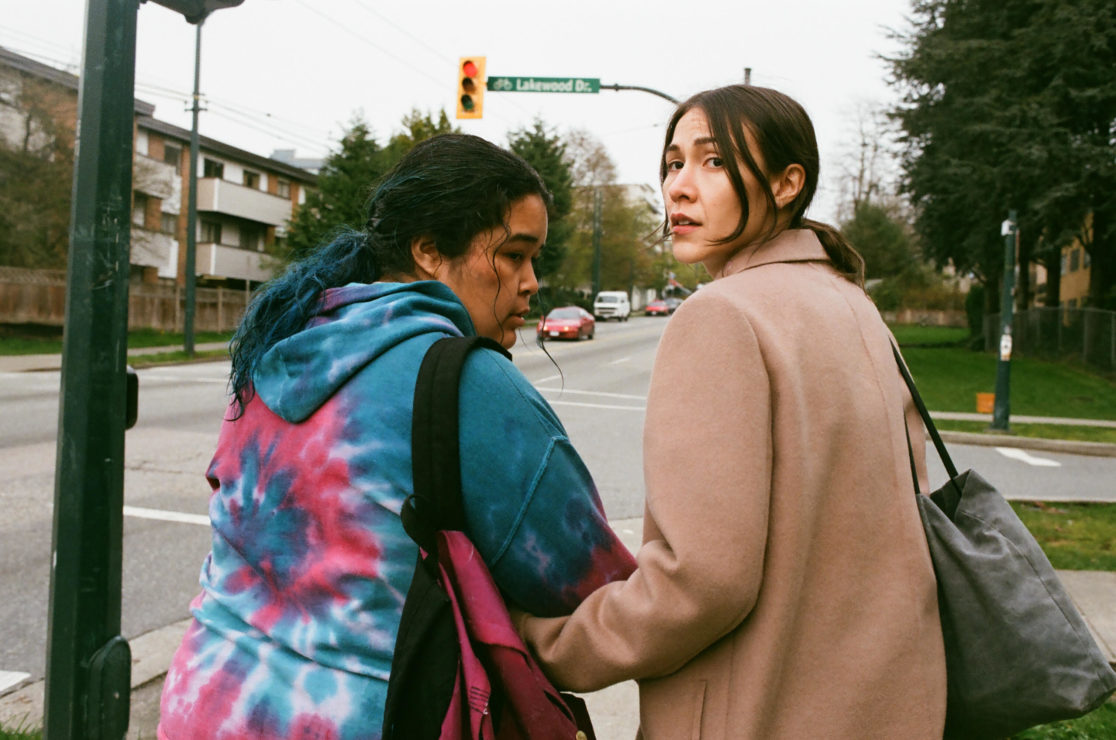The Body Remembers When the World Broke Open is a remarkable film centered on two Indigenous women

Please be advised that this article deals with domestic violence against Indigenous women. This may be disturbing for some readers.
After the sudden closure of Cinecenta, I relegated myself to the idea that I would have to wait to watch Elle-Maija Tailfeathers’ The Body Remembers When the World Broke Open some other time. But, after coming across an announcement on the filmmakers official Facebook page that this film – which was a recent recipient of the $100 000 Rogers Best Canadian Film Award prize – was available to watch through Google Play, I wasted no time renting it for $4.99.
Although I only had two days with it, I returned to it several times — I simply couldn’t stop thinking about it.
Created in real time, the film weaves an ambiance that invites the audience to be a part of the process of the film, which prevents the viewer from becoming a tourist or voyeur within the experience of the story.
The film begins with Rosie, a young pregnant Kwakwaka’wakw woman, singing through industrial noise as she walks to the home she shares with the father of her baby and his mom.
But as she steps in the building, her humming suddenly stops, and her gaze abruptly falls to the ground.
She quietly steps into the tiny apartment cautious of the violent cussing, that continues to grow louder. Nobody greets her or asks her how she is.
At the same time, Aila — a 31-year old Sami and Blackfoot woman, in a monogamous partnership with Ben — is alone at a gynecologist’s office getting her first intrauterine device (IUD).
As she is walking home, she notices Rosie, who stands quietly in the cold rain. Rosie’s gaze is on a man violently yelling at her from across the street.
She is bruised, bleeding, and barefoot.
Alarmed, Aila proceeds to rescue Rosie from the situation and leads her to the direction of her comfortable posh home. As Aila walks into the lobby, her neighbor notices her distress and asks her if everything is okay. Unlike Rosie, Aila has people who greet her and ask her how she is.
But this is where their differences end. We soon find out that Aila and Rosie are both resourceful, bold, and unafraid of consequences, in spite of the uncertainty they face.
Conversely, the film also engages with Rosie and Ailia’s vulnerabilities. Although Rosie maintains she will have the baby she carries, hints of whether she will keep her son are woven into the film. Similarly, although she has just gotten her IUD, the film explores Aila’s uncertainty about her decision. She cries, when Rosie tells her she will make a good mother one day. Thus, their uncertainty about motherhood is what connects the two women.
But there is something else that connects the two women: the colonial violence Rosie has endured and Aila has witnessed.
Aila takes Rosie to a safehouse but in spite of the violence, Rosie rejects Aila’s help and goes home to her abuser. As Rosie and Aila walk out of the safehouse, Aila is reassured by the workers at the safehouse that it is normal for women to go back to their abusers.
But Aila blatantly questions this normalcy and the film ends with Rosie quietly returning to her home and Aila quietly returning to hers. As a settler, it is important to delve into why the film ended this way because it ultimately explains why the two women make the decisions that they do.
The safehouse represents what we can “give” to Indigenous women, but it is a temporary solution to colonialism. It is not what Indigenous women need to be safe. Consequently, as long as settler colonialism exists, the patterns of domestic violence in the film will continue.
As the film finishes, Rosie walks home in the same way she fled, bare-footed.
Although the ending of the film broke my heart, the film is an opportunity to examine how settler institutions place Indigenous women into violent situations like the one in which Rosie finds herself. After all, Rosie — who had grown out of the foster care system — may never have been in the violent situation with her boyfriend if she had never been placed in that system, which has more Indigenous children in it than residential schools did.
I highly recommend that settlers watch this film and use it to be introspective, discuss and act together to recenter Indigenous women and their needs, as we work towards decolonization.






